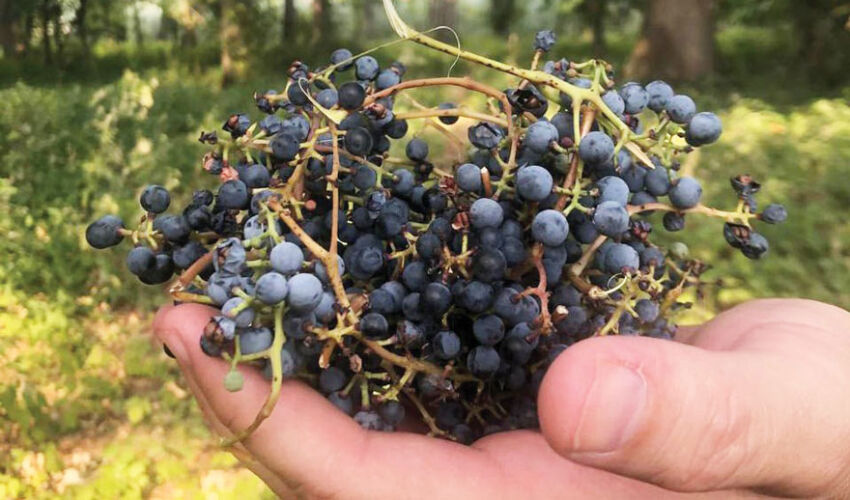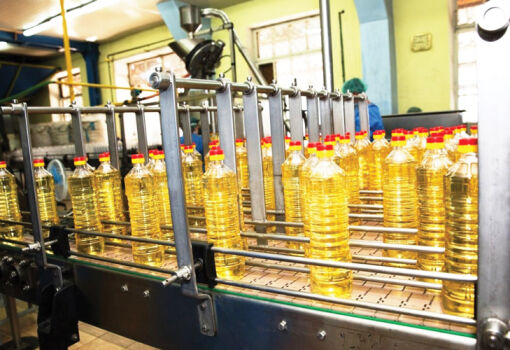
However, in order to harvest them, they had to find them first, which was not easy. Wild grapes grow in the pripruta zone, in forest areas. Vitis vinifera Sylvestris has been listed in the Red Book since Soviet times. The project team traveled to Zberoaja village (Nisporeni district). Local residents helped them in their search.
The first time they came in the early summer of 2023, they made sure that these are not feral varieties, they are really wild grapes, growing on their own roots. Then we came back at the end of August to pick it. In five hours the five of us picked only 20 kilograms, because the bunches were very small and the berries were small. To avoid technological mistakes, we decided to turn to a professional winemaker. But, unfortunately, one of the workers threw the grapes away.
This did not stop the enthusiasts, and two weeks later they went to pick grapes once again. They took about 20 kilograms to Crama Mircești, and did the picking by hand. The berries contained very little juice, very strongly colored. Fermentation was done with wild yeast. This harvest yielded 4.5 liters of wine, a very unusual black-colored product with a grassy aroma. The sample was also given to the Department of Enology and Chemistry of TUM for research.
The wine, of course, surprised by its color and taste, and even more by its condition. The sugar content of the berries was 230 g/l. In the wine, the alcohol was 8.5%, with residual sugar of 4 g/l. The question arises, where is the difference? What is some of the sugars converted into?
In 2024, a little over 18 kg of grapes were harvested and immediately taken to the university. There it was processed under micro winemaking conditions, and 3.5 liters of wine was produced. But there won’t be any left for tasting, as it all went into more detailed research.
According to Dr. Iurie Scutaru, fermentation was done in two variants – with wild yeast and with selection yeast. Besides quantifying the content of ethyl alcohol, organic acids and total dry extract, the research focused on the phenolic complex of the grapes and wine. An increased amount of phenolic substances was found, which is several times higher than their content in wines from known red varieties – Cabernet Sauvignon, Merlot, Fetjaska-Niagre, Saperavi.
Various substances in the composition of wine are also being studied. Increased attention is paid to the anthocyanin profile of wines obtained under different conditions. It was concluded that the natural pigments of Vitis vinifera Sylvestris are slightly oxidized and polymerized during the year. The antioxidant and antiradical capacity of the wine is also investigated.
These studies are part of a deep, systematic program that will be integrated into regional studies of the Black Sea basin countries and international ones to complement current knowledge on the distribution, evolution of the vine and its value over millennia.













